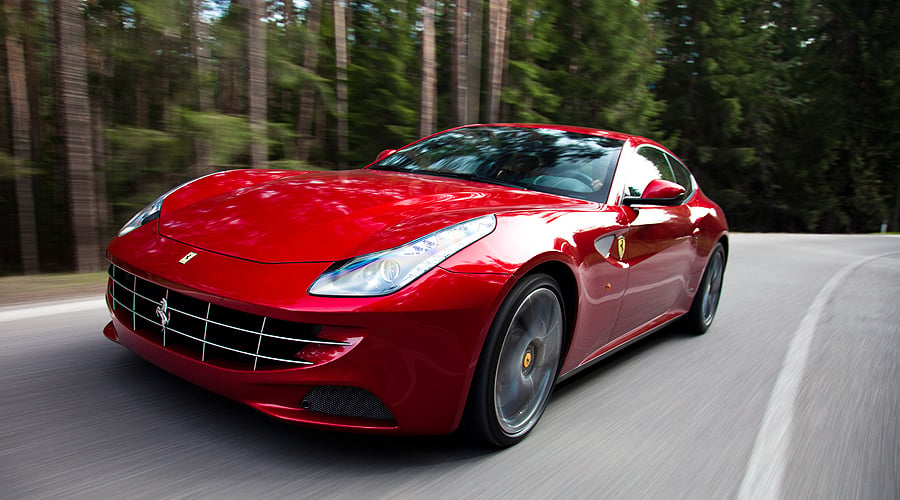
Four seats, 660HP and – with its four-wheel drive – able to tackle rain, snow and ice: no Ferrari in history has been more suited to everyday life. So, have the Maranello engineers really been able to square the circle? Classic Driver's Hamburg-based Editor, Jan Baedeker, has driven the car to find out…
“Even in a Ferrari, you wouldn’t want to be here,” grumbled the taxi driver, as we push through the drizzle and rush-hour traffic towards Hamburg airport. His comment reflects the long-held belief, reinforced by the thought of sporty Italian cars, that only dry and traffic-free roads bring driving pleasure.
And then there’s the fact that Ferraristi can carry no more luggage than a thick bundle of lire, sunglasses and a toothbrush. Or is this no longer the case? Because Maranello has now unveiled the 4WD Ferrari FF, a 660HP V12 supercar that can catapult you along dry roads with family, luggage and labrador aboard, to reach 62mph in 3.7 seconds. Yet at the same time, the FF’s all-wheel drive allows you to head away from the Engadin or Cote D’Azur to tour, perhaps, the deserts of the Middle and Far East. Or even further afield. Ice, snow, rain, sand – no problem.
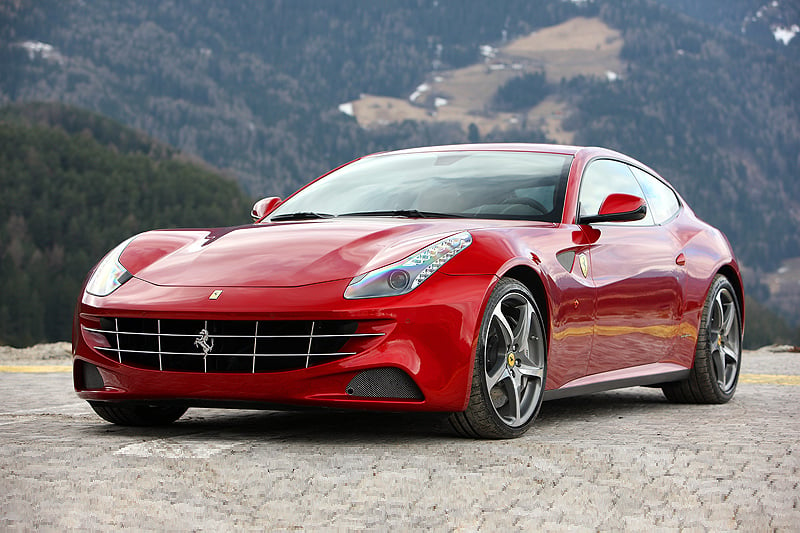
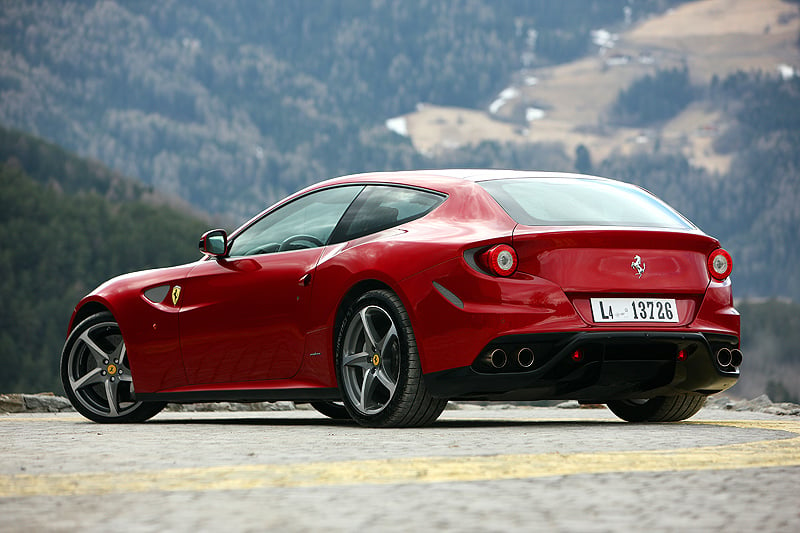
It’s a concept that has polarised the market. When the FF was presented at the Geneva Motor Show in March, public reaction was extreme enthusiasm – or total astonishment. There was very little in between but, from a marketing viewpoint, that’s no bad thing.
The FF will replace the 612 Scaglietti, of which some 3000 were sold, and it will aim to penetrate new markets as well as attracting buyers from the USA and Europe for whom a winter capability is a 'must'. Now Ferrari has invited journalists to the first test drive in the South Tyrol, where the mountainous roads help put this ‘jack of all trades’ in context. But first comes a technical briefing that lasts several hours, during which the clearly proud developers report every tiny detail of the all-wheel drive ‘4 Ruote Motrici’ system (4RM for short).
It’s 50 per cent lighter than other, comparable four-wheel drives, and only comes into play when really needed – such as when water, snow, ice, sand or dust result in a loss of traction from the rear wheels. Up to 200km/h, additional drive can be directed to the front wheels, but in the dry, Ferrari promises to give the FF driver a traditional rear-drive feeling.
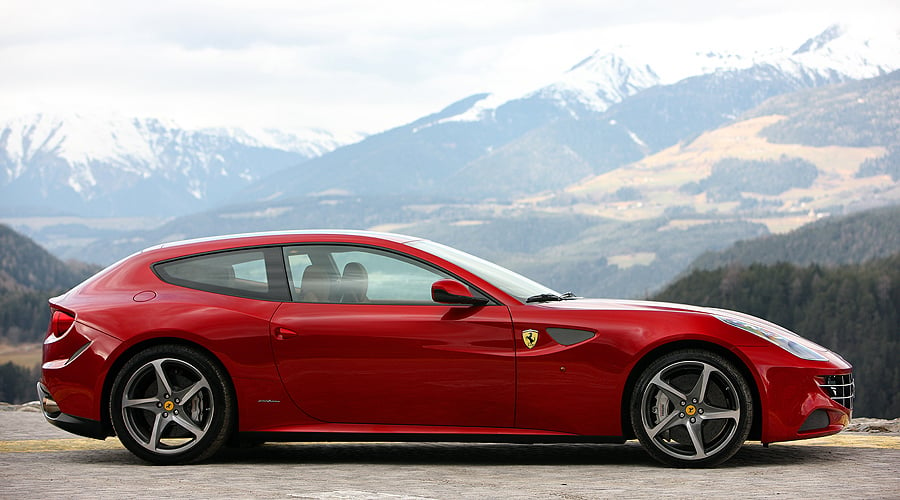
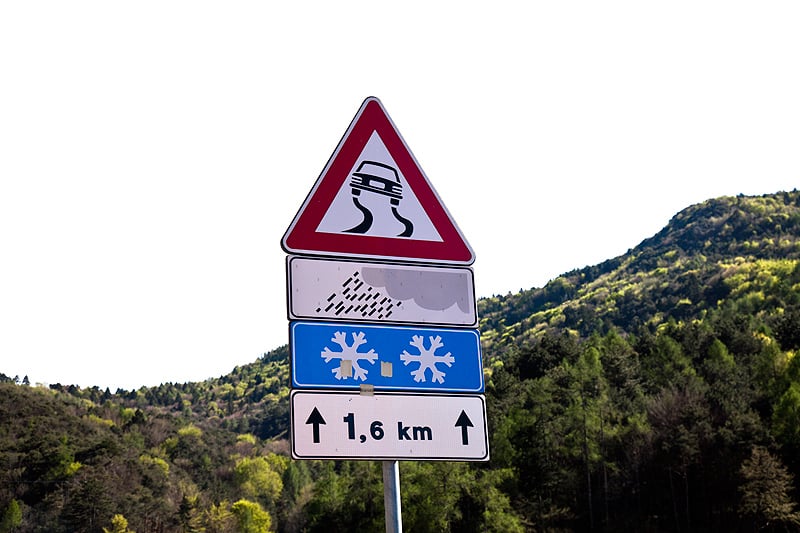
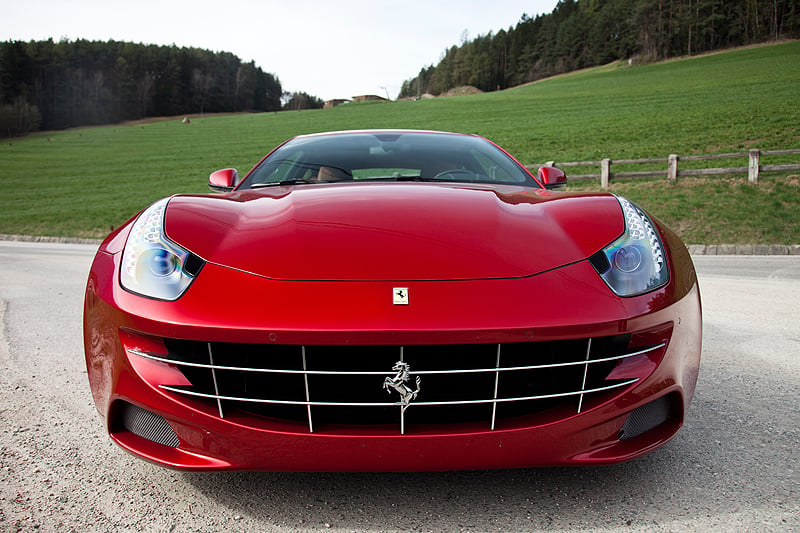
And we are here to experience the new model on the road, so are delighted when we finally have the ignition keys in our hands. But before the off, a visual scrutiny: in its dimensions, the FF differs little from the Scaglietti, but it’s far more dramatically styled by Pininfarina, with those sparkling LED slits and that animal-grin front grille. Up to the B-pillar, the newcomer has the flat, dynamic styling of its sibling GTB, but the larger glasshouse and steep rear make for significantly more leg and headroom in the rear seats: even at 1.9m tall, we could sit comfortably in the back over long distances.

One also has to congratulate the designers when it comes to the flexibility of the interior space. It’s no problem to stow the four-part Schedoni luggage, or a ski bag and golf clubs, thanks to the folding rear backrests and rear hatch – both foreign words for Maranello, up till now. The FF can store up to 800 litres of luggage space, and any critics of an 'estate' from Maranello should remember that Ferrari has in the past sanctioned independent designers (think of the 330 GT Shooting Brake by Vignale, or Pininfarina’s 456 GT Estate) to produce one-off concepts or commissions on the shooting brake theme.
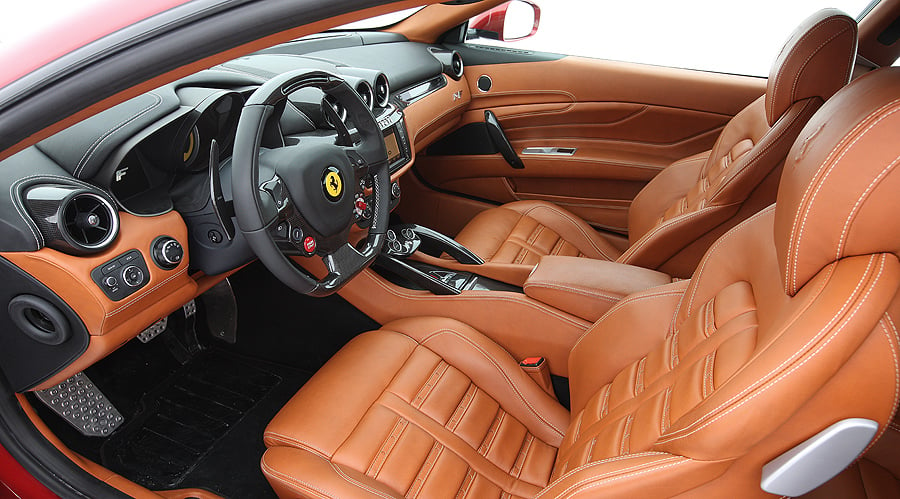
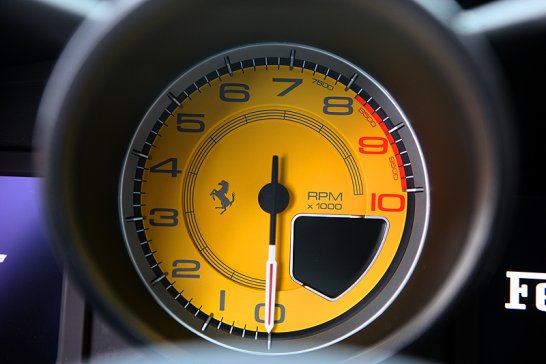
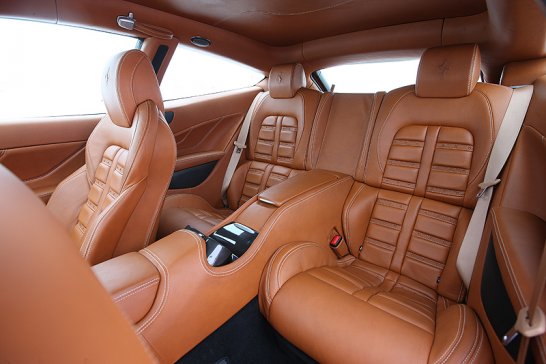
The cockpit of the FF is also dramatically designed, with plenty of visible carbon, and all the most important controls and large shift paddles located on the multi-functional F1 steering wheel.
Perhaps the interior of the roomy Gran Turismo might have been a little more ‘reserved’, leaving some of the drama to the 458 Italia. But that’s a matter of personal taste.
The navigation and entertainment system could be better developed, as in some other marques, but we need to remember that a Ferrari, even a four-seater, is not a place in which to lose oneself in the virtual worlds of on-board electronics. The driving experience is of a far more physical nature.
Turn the key in the lock, press the red 'Start' button on the steering wheel, and 12 cylinders come to life with a hoarse bark. The 6.3-litre V12 is derived from the power unit of the 599 GTB, sitting just behind the front axle and, equipped with direct injection, it produces 660HP at 8000rpm and a maximum torque of 683Nm. The front passenger, by the way, can follow every rpm and speed change via their own small display… which wouldn’t please every driver, I’d imagine.
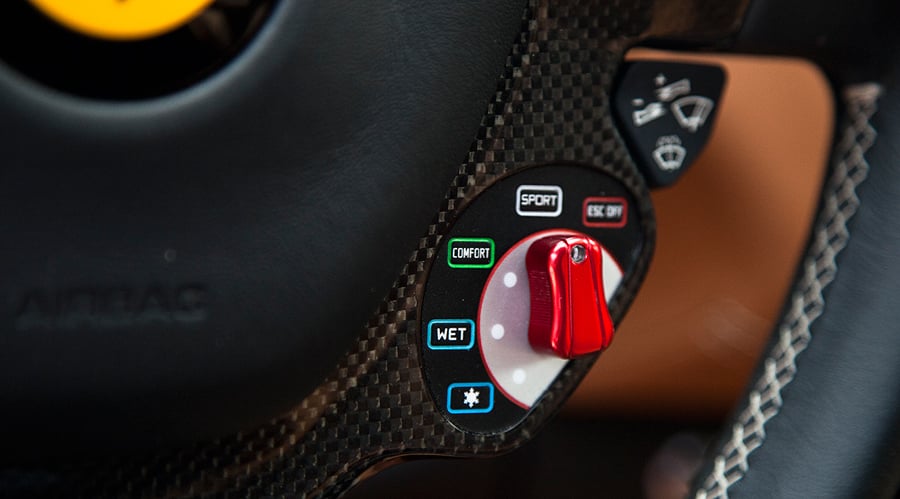
The Manettino on the steering wheel allows you to choose between four driving modes – which adjust the steering, gearchanges, throttle, dampers, ABS and ESP, depending on whether the conditions are super-slippery ice and snow, or whether the road suits the edgier pleasures of ‘comfort’, ‘sport’ or even ‘ESC Off’.
We start the day in comfort mode and trust the new seven-speed, dual-clutch transmission to change gear. There is an immense difference compared with the auto gearbox of the Scaglietti. The steeper the road and the tighter the curves, the more one would like to take control, but the sport mode offers, in our opinion, the optimal setting to experience the car’s potential – the electronic control systems allowing a little tail-out attitude in fast bends. At such times, the throaty roar of the engine is too tempting to leave the automated F1 box to shift gear, and you’ll want to use the carbon shift paddle for extra satisfaction. Add to this the fact that the Ferrari FF, despite its dimensions, remains secure and rock-steady under hard driving, and you start to feel the benefits of all that Formula One experience.
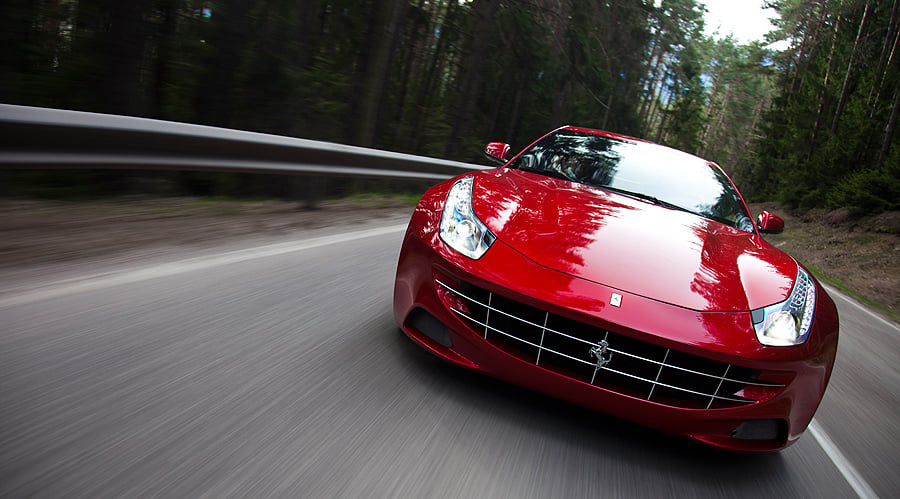
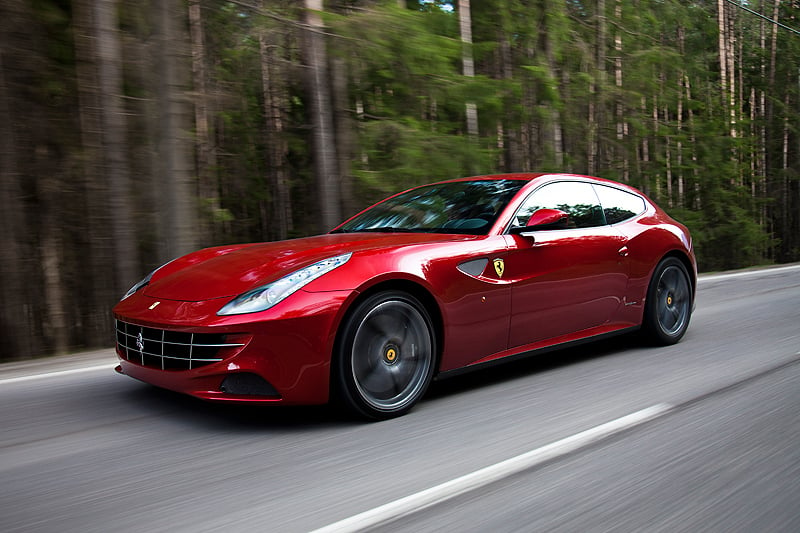
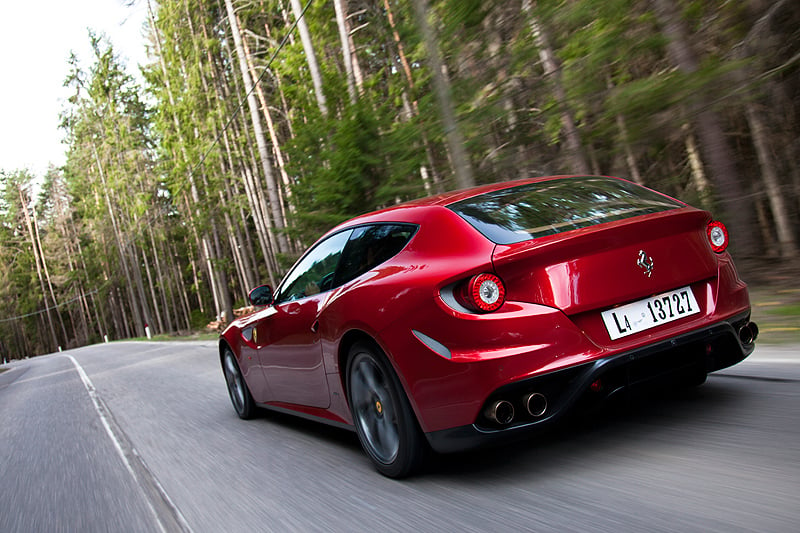
Naturally, we would also have liked to test the Ferrari FF on snow and ice, but the sun had banished winter from the landscape. A good reason, perhaps, to look ahead to the next ski season, even while we’re enjoying early spring. Nevertheless, we are able to confirm that the Ferrari FF can boast an unbelievably precise chassis, the most sensitive steering yet, and a broader range of practical uses than any Ferrari, ever before.
But if you expect a Jekyll and Hyde supercar, which switches at the push of a button to a comfortable saloon, be warned: even in comfort mode, with softer damping and earlier gearshifts, the FF remains edgy and demanding, a real Ferrari. And the noise from that V12, rising from hoarse to hysterical, means you’re never without the typically Italian drama.
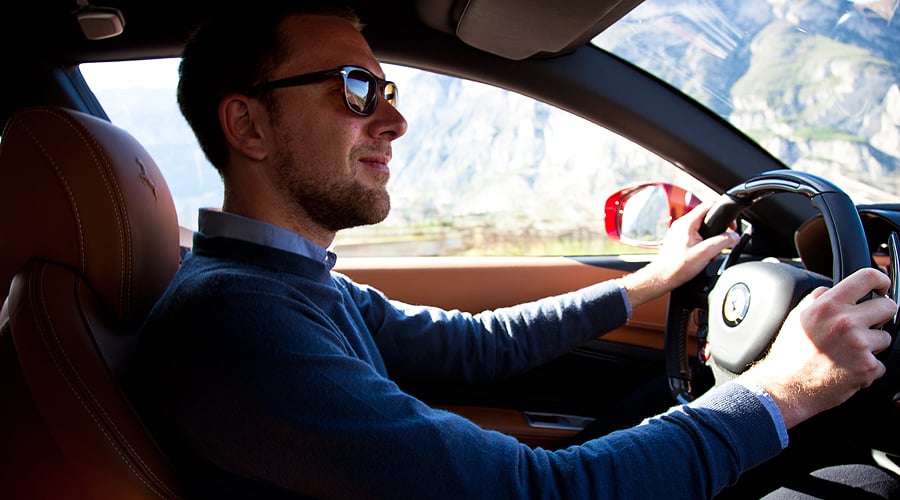
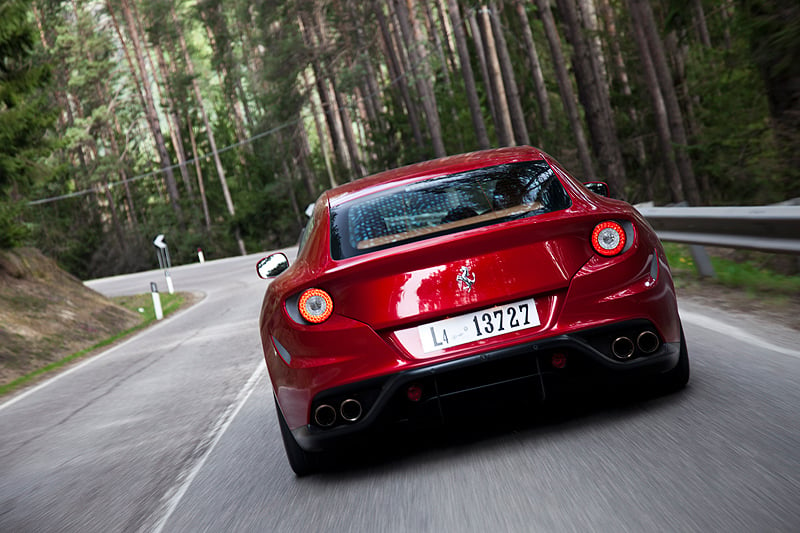
Who, then, is going to buy the new, all-wheel-drive Ferrari? Sporty family men from snowy states of the USA, wealthy winter sportsmen in Europe, entrepreneurs from Asia and the Middle East? The price (£227,026, in the UK) seems no barrier, as the first annual production run of 800 units has already been sold, and May will see the first left-hand drive models delivered in Europe. For the engineers of Maranello, it’s a triumph. They really have squared that circle.
Text: Jan Baedeker
Photos: Jan Baedeker / Ferrari
ClassicInside - The Classic Driver Newsletter
Free Subscription!
















